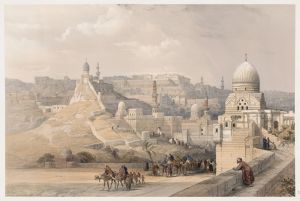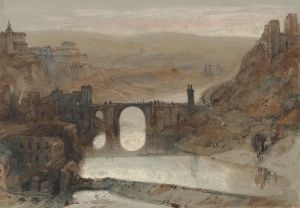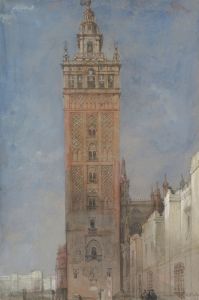
Ruins. Temple on the Island of Biggeh [Bîga, Bîjah], Nubia.
A hand-painted replica of David Roberts’s masterpiece Ruins. Temple on the Island of Biggeh [Bîga, Bîjah], Nubia., meticulously crafted by professional artists to capture the true essence of the original. Each piece is created with museum-quality canvas and rare mineral pigments, carefully painted by experienced artists with delicate brushstrokes and rich, layered colors to perfectly recreate the texture of the original artwork. Unlike machine-printed reproductions, this hand-painted version brings the painting to life, infused with the artist’s emotions and skill in every stroke. Whether for personal collection or home decoration, it instantly elevates the artistic atmosphere of any space.
David Roberts' artwork Ruins. Temple on the Island of Biggeh [Bîga, Bîjah], Nubia is a lithograph that forms part of his renowned series The Holy Land, Syria, Idumea, Arabia, Egypt, and Nubia. This series, published between 1842 and 1849, is celebrated for its detailed and romanticized depictions of the Middle East and North Africa during the 19th century. Roberts, a Scottish painter, created these works based on sketches and studies he made during his travels in the region from 1838 to 1839. The lithographs were produced by Louis Haghe, a prominent lithographer of the time, and are considered masterpieces of the medium.
The artwork depicts the ruins of a temple on the island of Biggeh (also spelled Bîga or Bîjah), located in Nubia, an ancient region that spans parts of modern-day southern Egypt and northern Sudan. Biggeh is situated near the island of Philae, which was home to the famous Temple of Isis. The temple ruins on Biggeh are less well-known than those on Philae but are historically significant as part of the broader religious and cultural landscape of the region. The island was associated with ancient Egyptian mythology and served as a sacred site.
Roberts' depiction captures the architectural remnants of the temple, set against the dramatic natural scenery of the Nile River. His work reflects the 19th-century European fascination with ancient Egypt and Nubia, which were often romanticized in art and literature. The lithograph emphasizes the grandeur and mystery of the ruins, with careful attention to detail and composition.
The island of Biggeh and its ruins, like many other sites in Nubia, were affected by the construction of the Aswan Low Dam in the early 20th century and later the Aswan High Dam in the 1960s. These projects led to the flooding of many archaeological sites in the region, although some were relocated or documented before being submerged.
David Roberts' works, including this lithograph, remain valuable historical records of the appearance of these sites before modern alterations and inundation. They are also significant for their role in shaping Western perceptions of the ancient world during the 19th century.





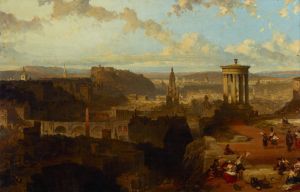
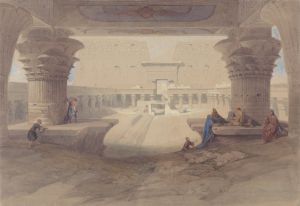
![Colossus in front of Temple of Wady Saboua [Wadi al-Sabua], Nubia.](/imgs/217471/s/david-roberts-colossus-in-front-of-temple-of-wady-saboua-wadi-alsabua-nubia-503a97c9.jpg)
![Excavated temples of Aboosimble [Abû Sunbul], Nubia.](/imgs/217481/s/david-roberts-excavated-temples-of-aboosimble-abu-sunbul-nubia-2ca5e7e8.jpg)

![Karnac [Karnak]. Nov. 29th, 1838.](/imgs/217502/s/david-roberts-karnac-karnak-nov-29th-1838-8df2346d.jpg)
![Medint [sic] Abou [Medinet Habu], Thebes. Dec. 8th, 1838.](/imgs/217511/s/david-roberts-medint-sic-abou-medinet-habu-thebes-dec-8th-1838-4bc38982.jpg)
![Temple of Kalabshee [Kalabsha, Kalâbishah], Nubia. Nov. 1838.](/imgs/217548/s/david-roberts-temple-of-kalabshee-kalabsha-kalabishah-nubia-nov-1838-be0ac440.jpg)
![Temple of Wady Saboua [Wadi al-Sabua], Nubia.](/imgs/217551/s/david-roberts-temple-of-wady-saboua-wadi-alsabua-nubia-52e62db.jpg)
